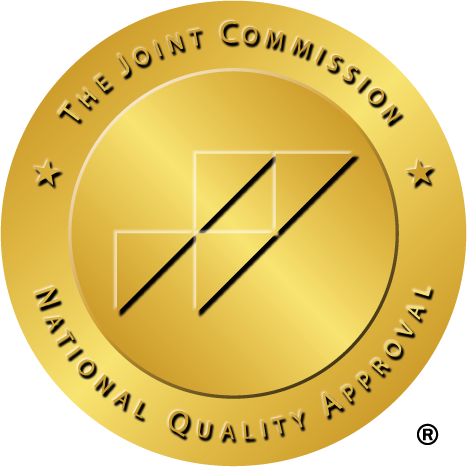Table of Contents
- What is Adderall®?
- What Does Adderall® Do?
- Is Adderall® an Amphetamine?
- What is Adderall® Used For?
- What Does Adderall® Look Like?
- What Does Adderall® Do and Feel Like to Those Who Take It?
- Who Prescribes Adderall®?
- Adderall® Dosages
- What is the Average Dosage of Adderall® Prescribed?
- What Does Adderall® Do Regarding Side Effects
- What Does Adderall® Do vs Vyvanse
- What Does Adderall® Do vs. Focalin
- What Does Adderall® Do vs Concerta
- What Does Adderall® Do vs Ritalin?
- What Does Adderall® Do to Someone With ADHD?
- What Does Adderall® Do to Someone Without ADHD?
- Can Adderall® Stop Working?
- What Happens if You Increase Your Adderall® Dosage?
- How Much Adderall® is Too Much?
- Can You Overdose on Adderall®?
- Can Adderall® be Abused?
- Can You Get Addicted to Adderall®?
- How Do You Stop Taking Adderall®?
- How Do You Detox from Adderall®?
- Adderall® Detox Timeline
- Overcoming Adderall® Addiction
What is Adderall®?
Starting out with the most important question – what does Adderall® do? Adderall® is an amphetamine medication used to treat Attention Deficit Hyperactivity Disorder (ADHD) and narcolepsy [1] . It’s designed to elevate certain neurotransmitters within the brain that are responsible for the regulation of attention.
Adderall® is prescribed in two forms: instant release Adderall® and Adderall® XR. Instant release Adderall® works quickly and may wear off in a few hours. Adderall® XR is used for the extended release of the chemical ingredients to ensure the drug works over the course of the day.
What Does Adderall® Do?
When it comes to what does Adderall® do specifically, it has a lot to do with brain chemical regulation. When someone has ADHD, it’s difficult for them to pay attention for long periods of time, see tasks through to the end, regulate emotions, remember deadlines, and start new tasks. Adderall® balances and regulates the chemicals within the brain responsible for focus and attention.
Additionally, Adderall® promotes energy levels and wakefulness, which may benefit those who suffer from narcolepsy, which is a sleep disease that causes excessive sleepiness.
Is Adderall® an Amphetamine?
Stimulants, like Adderall®, are also known as amphetamines; they speed up the body’s systems. Some are used to treat attention-deficit hyperactivity disorder and are legally prescribed.
What is Adderall® Used For?
So, what does Adderall® do besides treating the most commonly known ADHD? This usage is commonly associated by people because doctors often treat ADHD with Adderall®. Because of executive dysfunction, taking Adderall® can help those with this condition manage their life. Adderall® acts as a “jumpstart” for people who have ADHD. By increasing dopamine and norepinephrine in the brain, a person with ADHD can focus on tasks longer and better.
But ADHD treatment isn’t all Adderall is good for. Adderall® is also used to treat narcolepsy [2] because it increases energy and wakefulness, lessening the potential for a person to fall asleep when taking the drug.
What Does Adderall® Look Like?
There are many different colors and shapes of Adderall® pills. Understanding Adderall®’s appearance and intended uses can help to stop abuse and addiction because it provides a better and more thorough answer to What Does Adderall® Do?
The type of Adderall®, dosage, and whether it is a brand-name or generic drug will all affect how Adderall® tablets appear.
Adderall® Instant release may look like this:
- 5 mg instant release Adderall® is typically a white oval with AD imprinted on the pills
- 7.5 mg instant release Adderall® may be blue with an oval shape with AD 7.5 printed on the pills
- Adderall® 10 mg may be blue and round with AD 10 on the pills
- 20 mg Adderall® may be round, and orange with AD 20 printed on the pills
Source: FDA [3]
When compared to quick release, Adderall® extended release appears significantly different. The capsules for Adderall® XR are available in blue, white, or orange hues. Occasionally, one end is transparent, allowing little balls to be seen. The term Adderall® is usually displayed on each capsule if Adderall® XR is the brand name medication.
What Does Adderall® Do and Feel Like to Those Who Take It?
To answer the question of “What does Adderall® do?” more precisely, it’s important to address it by who is taking it and why.
In people who have ADHD, Adderall® promotes calmness and clarity. It gives them the opportunity to focus on the tasks at hand.
For those who don’t have ADHD, taking Adderall® can result in feelings of euphoria and elevated energy. There are dangerous physical and emotional side effects while taking this drug. It is imperative that Adderall® is not taken without first consulting a doctor and without a prescription.
Who Prescribes Adderall®?
Adderall® can only be prescribed by neurologists, psychiatrists, or family physicians.
Adderall® Dosages
Adderall® may be prescribed as an instant release or an extended-release. For XR, one dose daily is the typical prescription. For instant release, multiple doses may be prescribed.
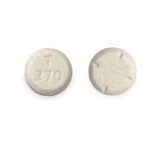 |
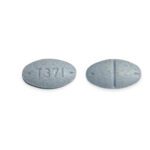 |
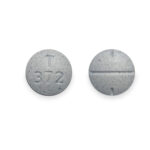 |
 |
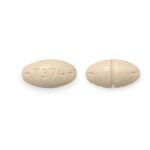 |
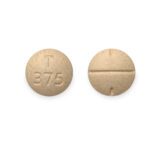 |
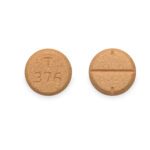 |
| 5mg | 7.5mg | 10mg | 12.5mg | 15mg | 20mg | 30mg |
What is the Average Dosage of Adderall® Prescribed?
Adderall® is typically prescribed between 5-60 mg per day and may be divided into multiple doses. Adderall® XR should not exceed 40 mg per day.
What Does Adderall® Do Regarding Side Effects
Amphetamine-based medications feature a variety of side effects. When taking Adderall®, a person may experience the following:
- Changes in or lack of appetite
- Difficulty falling asleep
- Hyperfocus
- Dry mouth
- Mood swings
- Excessive irritation (also known as “mAdderall®”)
- Diarrhea
Your likelihood of having adverse effects might be impacted by variables like age, body weight, hormone cycles, and pre-existing conditions, according to the U.S. Food and Drug Administration.
As the body gets used to the medication, some adverse effects of Adderall® could disappear.
What Does Adderall® Do vs Vyvanse
Adderall® (amphetamine/dextroamphetamine) and Vyvanse (lisdexamfetamine) are stimulant medications commonly used to treat ADHD. There are a few key differences between the two.
What does Adderall® do for children vs Vyvanse? Vyvanse is not advised to be used for children under the age of 6. For adults over the age of 18, the FDA has approved using Vyvanse for binge eating disorders.
Adderall® is also prescribed for narcolepsy.
Vyvanse only comes in an extended-release capsule, while Adderall® comes in both instant-release and extended-release forms. The immediate-release form of Adderall® lasts around 4-6 hours, while the extended-release lasts about 12 hours. The effects of Vyvanse last for approximately 10–13 hours.
The United States Drug Enforcement Administration has classed both medications as Schedule II prohibited narcotics, placing them at the highest level of supervision for drugs that are available to persons with a prescription from a doctor.
This indicates that both of these medications are regarded by the federal authorities as high-risk prospective drugs of abuse and as having a considerable potential to cause physical dependence in users.
What Does Adderall® Do vs. Focalin
Focalin and Adderall® both function by preventing the reuptake of norepinephrine and dopamine; however, they are not interchangeable. Focalin only includes one type of amphetamine salt, dexmethylphenidate; in contrast, Adderall® contains four different types of amphetamine salts.
Both medications are used to treat ADHD.
The United States Drug Enforcement Administration has classed both medications as Schedule II prohibited narcotics, placing them at the highest level of supervision for drugs that are available to persons with a prescription from a doctor.
This indicates that both of these medications are regarded by the federal authorities as high-risk prospective drugs of abuse and as having a considerable potential to cause physical dependence in users.
What Does Adderall® Do vs Concerta
The main distinction between Concerta and Adderall® is that while Adderall® contains amphetamine salts, Concerta contains methylphenidate. Adderall® particularly has an amphetamine and dextroamphetamine blend. The effects of Concerta stay longer and wear off more gradually over time than those of Adderall®.
Both are the most popular stimulant medications used to treat ADHD.
Within an hour of dissolving the first tablet layer, Concerta begins to work. The medicine is then released gradually over time, reaching its peak effects between six and ten hours later.
In contrast to Concerta, Adderall® reaches its peak levels three hours after taking it. It is customary to take immediate-release Adderall® every three to four hours due to this.
The United States Drug Enforcement Administration has classed both medications as Schedule II prohibited narcotics, placing them at the highest level of supervision for drugs that are available to persons with a prescription from a doctor.
This indicates that both of these medications are regarded by the federal authorities as high-risk prospective drugs of abuse and as having a considerable potential to cause physical dependence in users.
What Does Adderall® Do vs Ritalin?
Adderall® and Ritalin are both used to treat attention deficit hyperactivity disorder. Dopamine and norepinephrine, two brain chemicals that determine how well you concentrate, are regulated by these two substances.
Both Adderall® and Ritalin can also be used to treat narcolepsy. The main difference between each is that Ritalin begins to work more quickly than Adderall®.
The United States Drug Enforcement Administration has classed both medications as Schedule II prohibited narcotics, placing them at the highest level of supervision for drugs that are available to persons with a prescription from a doctor.
This indicates that both of these medications are regarded by the federal authorities as drugs with a high risk of abuse and the potential to cause physical dependence in those who take them.
What Does Adderall® Do to Someone With ADHD?
Adderall® helps those with ADHD become more composed and focused. They are able to concentrate on their current work because of it.
Clinically diagnosed ADHD sufferers have dopamine-deficient brains. ADHD symptoms can be reduced by stimulants like Adderall®, which raise dopamine levels in the brain. Among the issues that may be caused by ADHD are:
- Organization
- Completing a task
- Mindfulness and focus
- Listening to instructions and obeying them
- Hyperactive tendencies
- Short attention span
When someone with ADHD takes Adderall®, the above issues are easier to manage.
What Does Adderall® Do to Someone Without ADHD?
What does Adderall® do to those who don’t have medically necessary symptoms? Those who don’t have ADHD experience feelings of pleasure and increased energy after taking Adderall®. The use of this medication has potentially harmful mental and physical negative effects. It is crucial not to use Adderall® without first speaking to a doctor and without a prescription.
Adderall® is not a substance that improves performance. Instead, it corrects attention impairments. These deficiencies are absent in those without ADHD because they have normal prefrontal cortex function and adequate levels of neurotransmitters.
The body becomes overstimulated with dopamine and norepinephrine when someone without ADHD takes Adderall®. A person without ADHD may experience exhilaration instead of the usual calming effects of excess dopamine, which might disrupt brain function.
Can Adderall® Stop Working?
Adderall® tolerance can develop in the body when used for a period of time. If you are prescribed Adderall® for ADHD, you might notice that over time it has lost some of its effectiveness or ceases to work altogether.
When this happens, a doctor will assess the effectiveness of your current dose and, if necessary, prescribe a small increase in dose.
What Happens if You Increase Your Adderall® Dosage?
Increasing your dosage of Adderall® without first consulting your doctor or without a prescription at all can be dangerous. It is recommended that you always follow the prescription guidelines when taking Adderall®.
There are many cases where someone takes too much Adderall® for their age, weight, and body size. Doing so can increase your risk for serious side effects. If a doctor increases your Adderall® dose, follow their instructions and guidance with precision to avoid potential misuse or negative side effects.
How Much Adderall® is Too Much?
The standard maximum Adderall® dose for adults is 70 mg per day and 30mg a day for children. However, tolerance levels and medical conditions are taken into account when Adderall® is prescribed by doctors.
Your body knows when you’ve taken too much Adderall®. You may experience shaking, dizziness, erratic heartbeat, and blurred vision.
Can You Overdose on Adderall®?
What does Adderall® do if you take too much? This can be a very important piece of information to know as Adderall® misuse occurs frequently, unfortunately. Overdose is a concern when consuming Adderall® and your risk of overdosing is based on multiple factors like:
- The dosage taken
- If you have a tolerance
- Your age
- Mixing Adderall® with drugs or alcohol
Adderall® Overdose Symptoms
While there is no specific dose for which someone will overdose, there are signs and symptoms to look out for like:
- Hallucinations
- Rapid heart rate
- Panic
- Hyperactivity
- Diarrhea
- Dilated pupils
- Loss of consciousness
- Abnormal cramping
- Tremors or Convulsions
- Aggression
- High body temperature
- Hypertension
- Chest Pain
- Seizures
- Restlessness
- Paranoia
- Coma
If you or someone you know appears to be having an Adderall® overdose, seek medical attention immediately.
Adderall® Overdose Treatment
Adderall® overdose treatment should not be started without the guidance of a medical professional. A medical professional can identify the best treatment for a person experiencing an Adderall® overdose. Treatment for an Adderall® overdose may include:
- Giving sedative drugs like barbiturates or benzodiazepines
- In cases of recent oral overdose administering activated charcoal
- Cardiovascular risks can be managed with antihypertensives and other cardiac medicines
- Antipsychotics may occasionally be used for the treatment of acute amphetamine intoxication
Someone might be concerned that reporting the occurrence could land them in legal trouble if they call for emergency care for someone who overdosed on Adderall® that wasn’t authorized for them.
Although laws differ from state to state, most states have Good Samaritan laws that guarantee protection for anyone who reports overdoses under all conditions. When someone receives medical attention for their own or another person’s overdose, they are not subject to legal repercussions.
Can Adderall® be Abused?
Adderall® is frequently misused or obtained without a prescription. It’s one of the most commonly abused prescription medications in the United States, frequently being misapplied to aid in studying, achieving more, or feeling more sociable.
Students frequently utilize the substance to study for exams or do well in school on campuses across the U.S. . Since Adderall® suppresses hunger, it is occasionally used illegally to aid with weight loss.
Can You Get Addicted to Adderall®?
Adderall® has a high addiction potential due to the nature of this drug. Its stimulant effects mirror that of meth. People with or without ADHD may become addicted to or abuse Adderall®.
What are the Signs of Adderall® Abuse?
Given how strong of a stimulant Adderall® is, it might be challenging to spot abuse. Adderall® addiction is common among those who want to be more productive and alert. They frequently exhibit motivation and don’t have the traditional appearance of a drug user. Students and young professionals are more frequently individuals who abuse Adderall®.
Some signs of Adderall® abuse include:
- Loss of appetite
- Memory loss
- Relationship problems
- Mania
- Impulsive behavior
- Overly talkative
- Secretive behavior
- Excessive weight loss
- Financial problems
- Social withdrawal
How Do You Stop Taking Adderall®?
Serious withdrawal symptoms may take place if you stop taking Adderall® abruptly. It could disrupt your life and lead to severe consequences on your mental, emotional and physical health.
Under medical supervision, a regulated and gradual taper, or even a weaning-off time, is preferred. Start by cutting the dose in half for a week, then go down from there.
How Do You Detox from Adderall®?
The first step to detoxing from Adderall® is to consult with your physician and set up a schedule to wean off the drug. During detox, seek the advice and emotional support of a mental health expert. Set reminders to eat three meals a day and stick to a strict bedtime routine. Participate in aftercare programs, counseling, family therapy, and support groups.
Adderall® Detox Timeline
Generally speaking, detox will contribute to uncomfortable side effects. A detox timeline typically looks like this:
Day 1-3: Insomnia, exhaustion, and despair are a few of the earliest withdrawal symptoms.
Day 4-7: Another round of symptoms could emerge after the initial ones have subsided. The individual may start to experience irritability, anxiety, restlessness, or difficulty concentrating. They can also have difficulty falling asleep at night.
Second Week: For the majority of people, sleep will start to return to normal, but it may still fluctuate at this stage of the process. Additionally, the individual may feel depressed, extremely tired, and crave Adderall®.
Third week and beyond: By now, the withdrawal symptoms ought to have diminished. But there’s a chance that certain symptoms can linger, particularly if the client has a high Adderall® tolerance and has been on the medication for a while. Fatigue, drug cravings, and mood changes are a few long-term withdrawal symptoms that may occur.
Overcoming Adderall® Addiction
Adderall® addiction can affect anyone at any time. It may seem impossible to overcome an Adderall® addiction, but it is possible.
If you or someone you know is addicted to Adderall® or at risk of becoming addicted to Adderall®, we are here for you. Contact us today.
Frequently Asked Questions about Adderall®
Adderall® is beneficial when taken under the strict guidance of a doctor. Here are some frequently asked questions about Adderall®.
Sources
- National Library of Medicine. (n.d.). Amphetamine – StatPearls – NCBI Bookshelf. Retrieved from https://www.NCBI.nlm.nih.gov/books/NBK556103/ on 2023, January 17
- The treatment of narcolepsy with amphetamine-based stimulant … (n.d.). Retrieved January from https://jcsm.aasm.org/doi/10.5664/jcsm.7788 on 2023, January 17
- Adderall CII (dextroamphetamine saccharate, amphetamine aspartate … (n.d.). Retrieved from https://www.accessdata.fda.gov/drugsatfda_docs/label/2017/011522s043lbl.pdf on 2023, January 17
New Waters Recovery Editorial GUIDELINES
At New Waters Recovery, we take your health and wellness seriously. We have a thorough process in place to ensure the integrity of information that is displayed on our website. All content published to our site undergoes a rigorous medical review by a doctorate level clinician to ensure medical accuracy. Read More About Our Process









